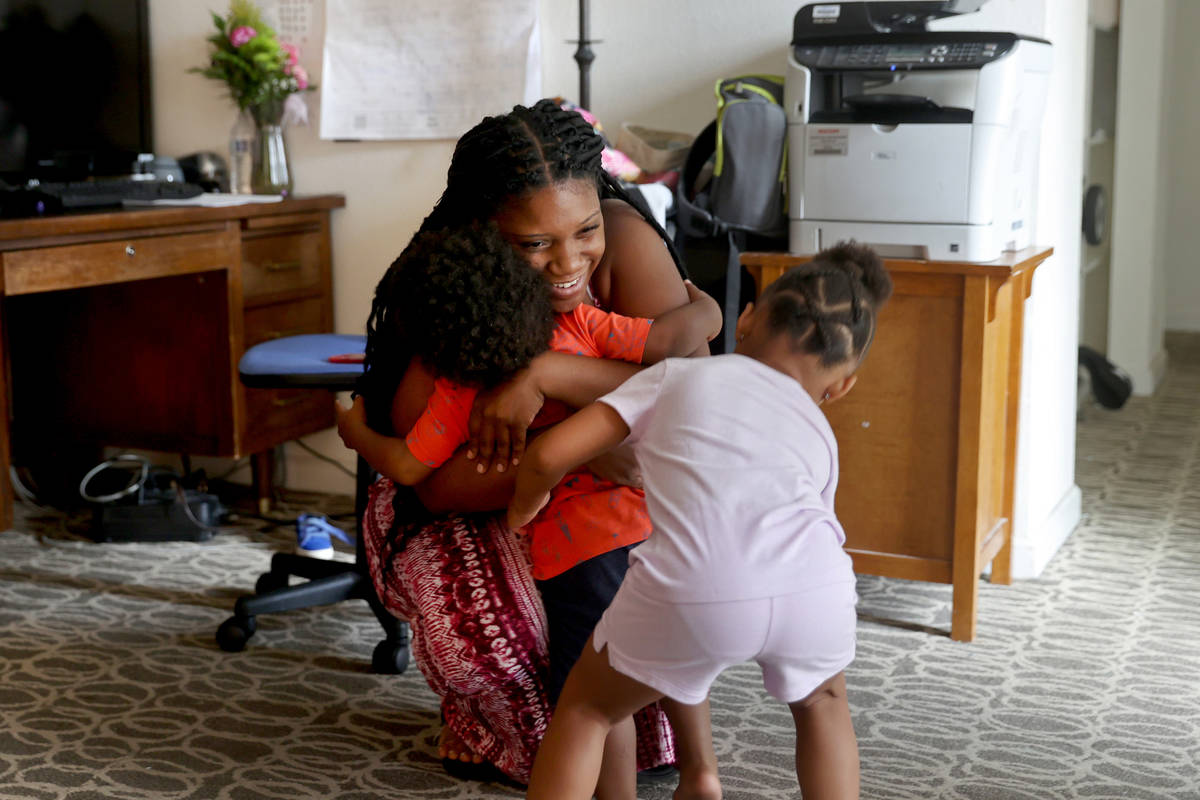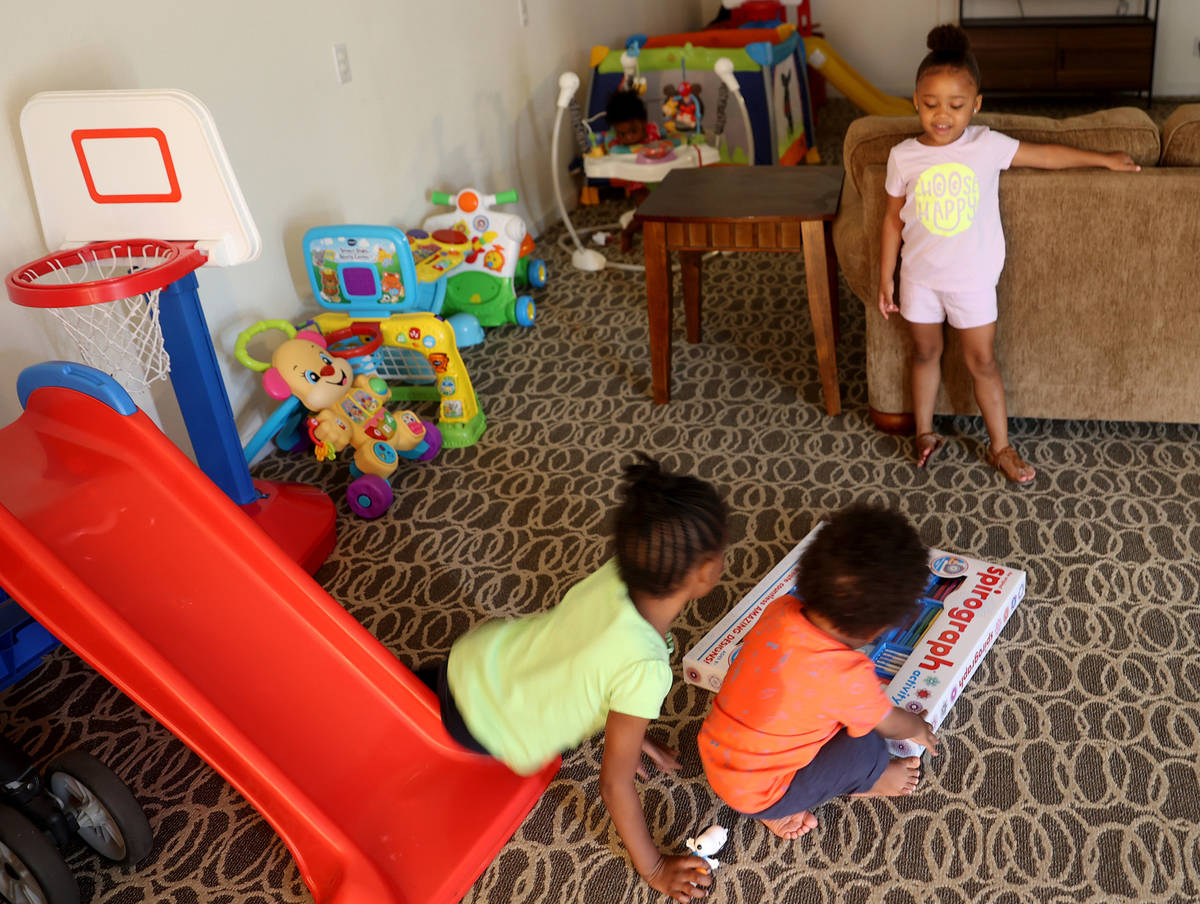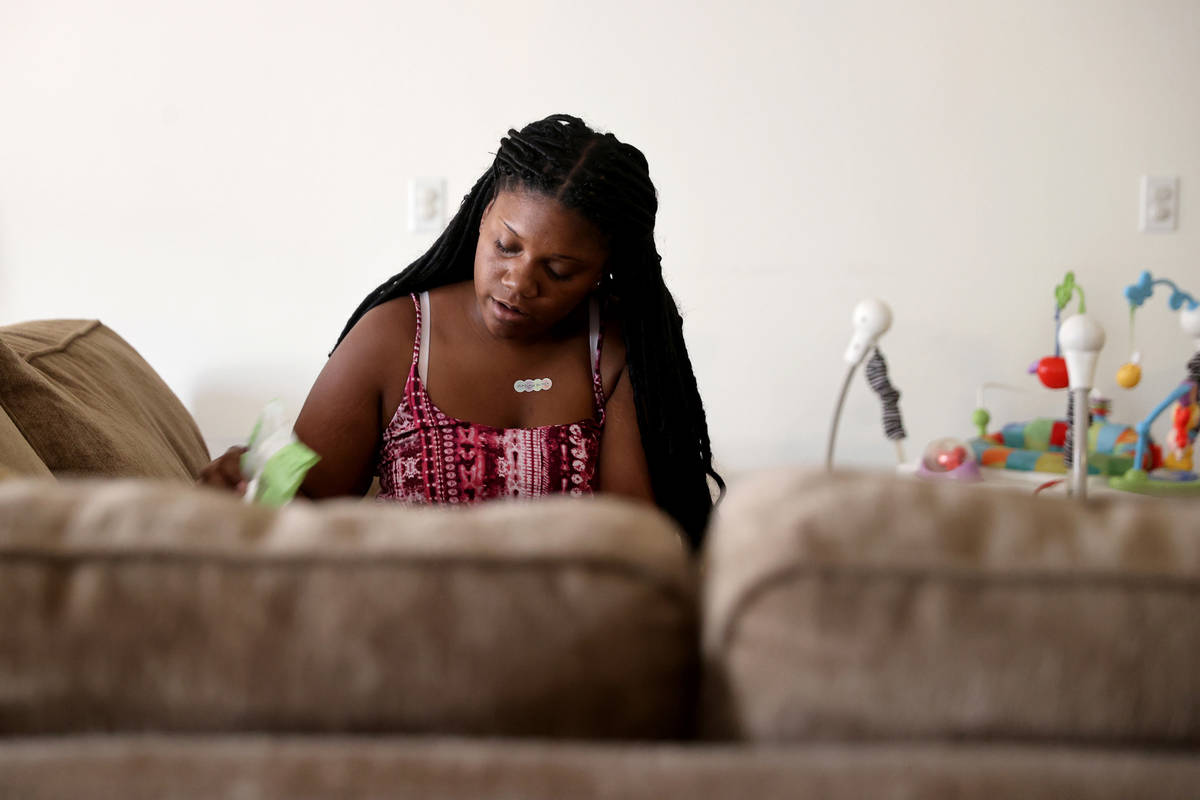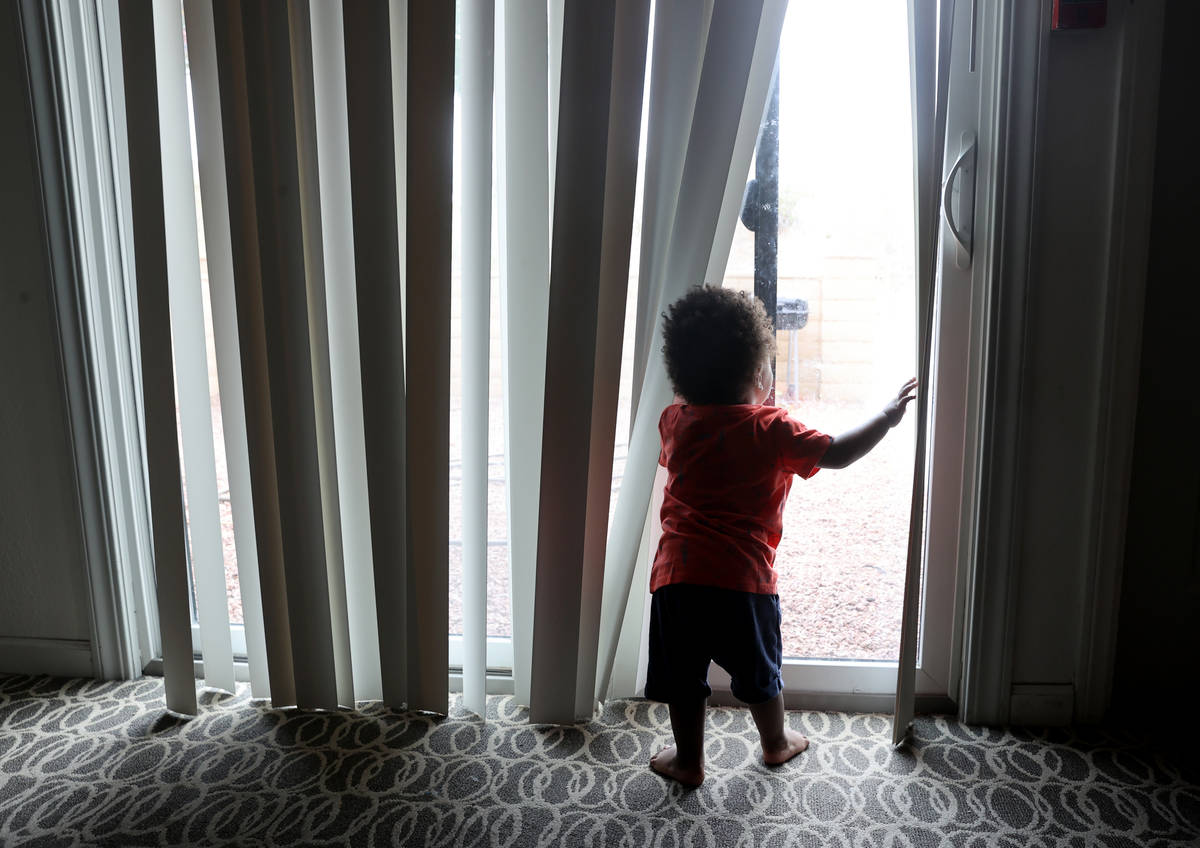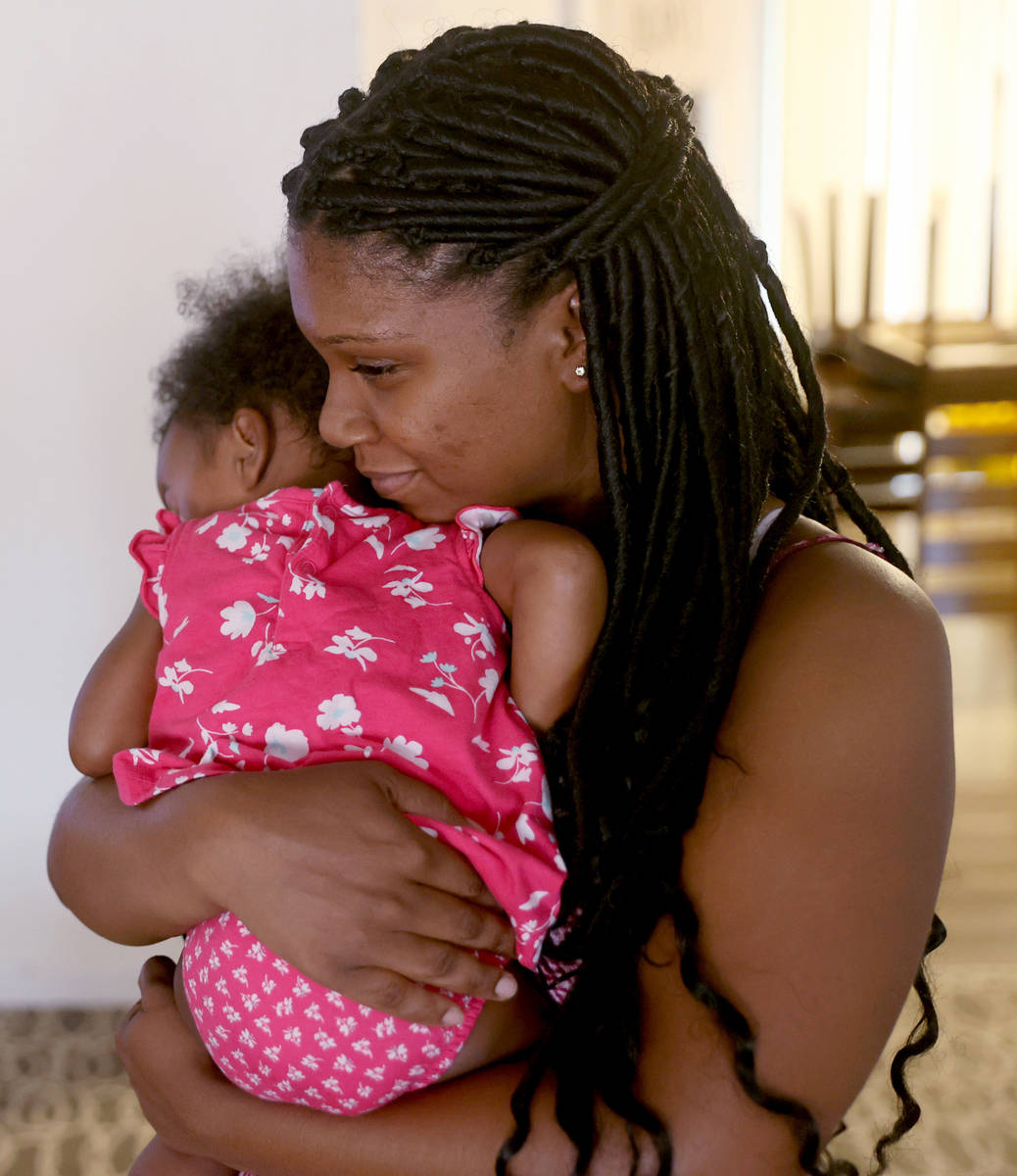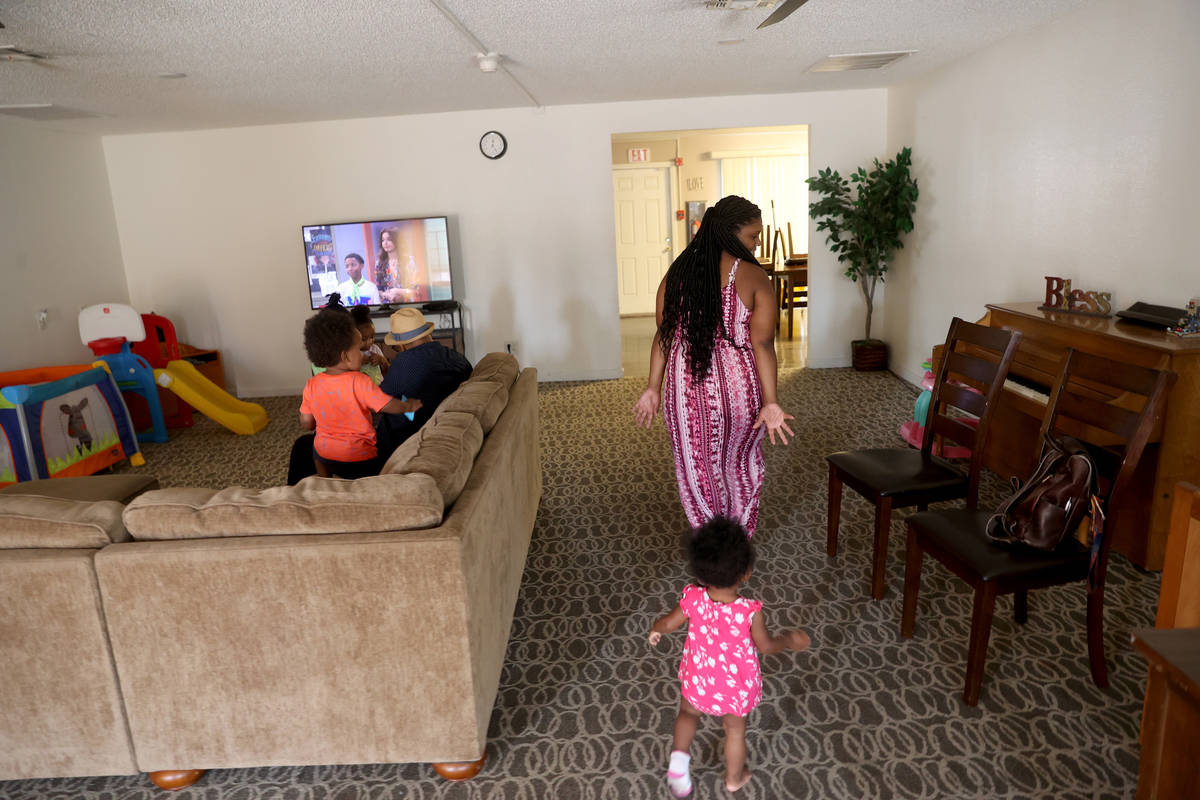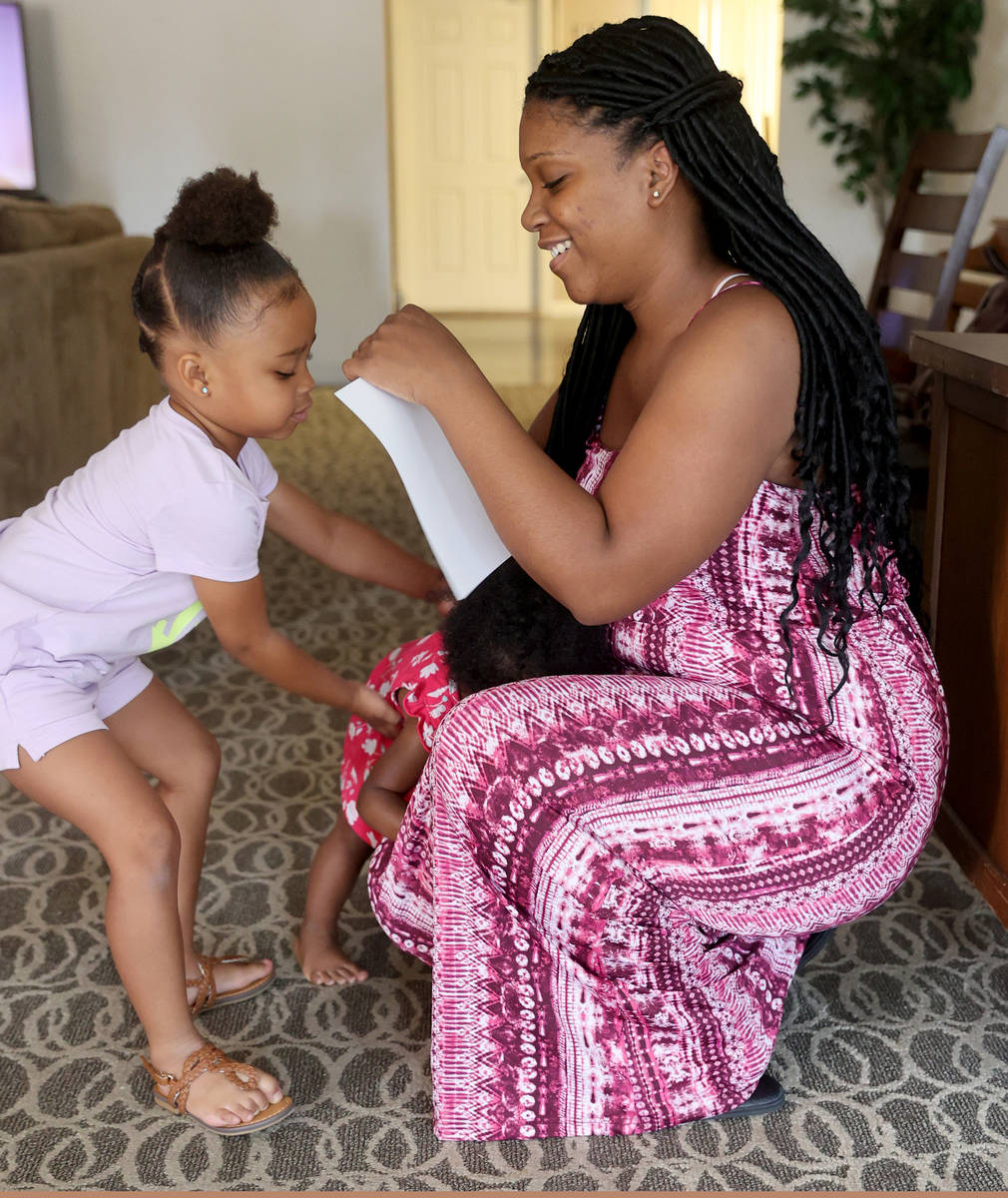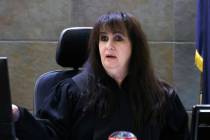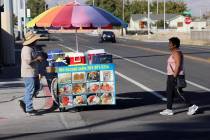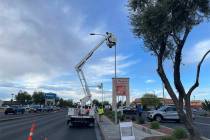Experts fear many at-risk kids in Clark County suffering harm
In an eight-bedroom house at St. Jude’s Ranch for Children, five foster kids huddled together trying to spell “juice” on a yellow sticky note affixed to the head of a 6-year-old girl.
“Use your brain power,” an 11-year-old girl urged the group.
Despite the tableau of seeming domestic bliss, the kids and their foster mother provide a strong example of how the coronavirus has affected both at-risk kids and the ability of the social services agencies and nonprofits that serve them to do their jobs.
The pandemic, which has caused a serious decline in donations to nonprofits like St. Jude’s Ranch, has also sparked a bigger concern: Though there’s been a spike in domestic violence calls, the number of child abuse investigations has declined.
Advocates for young at-risk kids say that because they are isolated during the pandemic, child abuse and other unhealthful living situations are likely occurring at the same or higher levels than usual, just not being reported.
The kids described above have been quarantined at St. Jude’s with their 25-year-old foster mom and her 5-year-old birth daughter since the beginning of the pandemic.
The other children are three siblings, ages 1 to 6, who are separated from a sister who remains at another foster home, and an 11-year-old girl. Because of the pandemic, the kids have been able to have only virtual visits with their sister, though they hope she is able to rejoin them soon.
The 11-year-old was supposed to be adopted by now, but that has been blocked by restrictions imposed because of the pandemic.
Child abuse reports decline
In Nevada, there were 14 percent fewer reports to the state in March than in the same month last year, a trend advocates and experts say strongly suggests that violence against kids is being underreported.
And with school buildings closed for classes since March, children are interacting with fewer adults who are trained to spot signs of abuse and neglect.
In Clark County, for example, the Department of Family Services investigated 664 cases in April, compared with 1,119 in April 2019 — a decrease of 40 percent, said Jill Marano, assistant director of the agency.
“It’s very concerning to us, and it leads us to wonder what’s going that we don’t know about, or that we might find out later when it’s much more severe,” Marano said. “Because the earlier we can intervene, the better.”
St. Jude’s CEO Christina Vela said that children in the care of the nonprofit are usually already sensitive to trauma, and there are ongoing implications of not having in-person visits because of the virus.
“Children are truly uneasy about, ‘Where is my mom? Is she safe? Does she have a mask’? And when children are looking for a natural support system, they want contact with their siblings,” Vela said.
“They’re really feeling isolated, even though they’re among their peers, just with the lack of ability to stay connected to their biological brothers and sisters, it’s been really tough for kids to worry about people they love.”
Siblings reunited
Thankfully, she said, the siblings at St. Jude’s were able to stay together during the quarantine, after being separated from each other for months. The fourth sibling is expected to join them soon.
They arrived just after the stay-at-home order hit, when Tytaliayah “Lia” Parker became one of seven “House Moms” who live in houses at the ranch and care for foster kids 24/7.
Parker got the first two babies within two hours of moving in, and picked up their 6-year-old sister from Child Haven shelter about a week later. Parker’s biological 4-year-old daughter, Ma’Liayah, also lives with them.
“Where’s my brother? Where’s my sister?” she cried with excitement when the other kids moved in.
Because of the sensitive issues surrounding the foster kids’ stories, the Review-Journal is not identifying them or their background.
On a recent weekday, Parker walked into the living room, holding the smallest of the foster care siblings, a 1-year-old baby girl.
“Mama!” The 3-year-old boy said, his chocolate brown eyes widening, as he pulled on her long pink dress.
“Miss Lia, you look pretty,” the oldest girl said. They clung to her, breathing hard to smell her perfume.
The 11-year-old, a blue-eyed blonde who was placed with Parker in April, has been affected by the virus in a way that is every bit as painful as the sibling separation.
By now she should have been living with her new adoptive parents. Instead, she has yet to meet them in person and has talked to them online only a few times on the Zoom teleconferencing software, she says.
In a scrapbook, she has pictures of her new family in Washington state, including her soon-to-be bedroom and the family’s dogs, Missy, Rucca and Jake.
The book also contains photos of all her previous foster siblings, whom she can’t visit anymore, as well as those of her five biological siblings, all of whom live in Reno.
The girl, whom the Review-Journal is not identifying to protect her privacy, has spent virtually her entire life in foster care.
‘I’ll be an only child’
“Now, it’s only me. I’ll be an only child,” she said, envisioning the new life awaiting while squeezing a stuffed dog she called “Buddy.
The dog, a gift given from her biological mother when she was born, is the only possession she has connected to her birth parents.
“I had to wait, but soon, I’ll have a new family,” she said.
At home, the kids do all the things you’d expect from youngsters with inquiring minds and extremely active bodies: They read books, sing in the car, piece together puzzles and ride bikes around campus. The babies work on their motor skills. They now spend some days at Cowabunga Bay water park. Other days, they run around the yard in the sprinklers.
On this day, the kids were drawing one another. The girls designed different colored dresses on paper. They snacked on pudding.
Parker said that, at first, it was an adjustment. The babies couldn’t sleep, and being left alone upset them. But then they learned Parker’s voice. The oldest of the sibling group, 6, tells her about her dreams, some of which mimic the traumatic living situation she came from.
On Mother’s Day, the kids helped make Salisbury steak and homemade mashed potatoes. As the baby boy munched on his biscuits, his older sister asked Parker, “Can I be your daughter for today, and can you be my mom? I’ll make you a gift.”
Parker encourages the public to be vigilant when it comes to looking for signs of abuse in children in the community. (Donations can be made to stjudesranch.org/donate-now/.)
She said the moments she has shared with her foster children remind her of why she signed up for the job.
“I keep reminding them that I’m here to fill in the space for you until you go to your next milestone,” Parker said.
“We want you to continue to be a kid, grow and, wherever life takes either one of us, you didn’t miss anything because of your past.”
Contact Briana Erickson at berickson@reviewjournal.com or 702-387-5244. Follow @ByBrianaE on Twitter.
Reporting child abuse
— If you suspect child abuse or neglect, call the Child Abuse Hotline at 702-399-0081 or visit redrock.clarkcountynv.gov/dfswebform.
Signs of possible physical abuse
— Unexplained bruises, burns or injuries in various stages of healing; fear of parent or caregiver; unusual wariness of physical contact, among others.
Signs of possible neglect
— Abandonment by parent or caregiver; unattended medical needs; consistent hunger, inappropriate dress or poor hygiene; lice or distended stomach; fatigue, among others.
Signs of possible sexual abuse
— Exhibiting sexual behavior or knowledge of sex that is not appropriate for the child's age; speech loss ort humb-sucking; signs of depression or aggressive behavior, among others.
Signs of possible emotional abuse
— Speech disorders or delayed physical and emotional development; habit disorders like thumb-sucking or rocking; anti-social or destructive attitude; aggressive, delinquent or attention-seeking behavior; depression, among others.
Source: Clark County Department of Family Services



